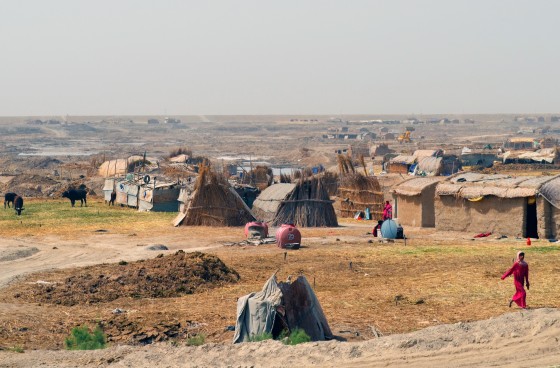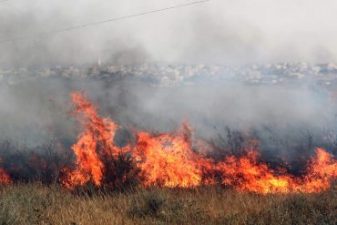Upstream hydroelectric dams have already inhibited the recovery of Iraq’s legendary Mesopotamian Marshes. A massive dam currently under construction in Turkey may wipe them out completely.
For the next two months, I’ll be taking a break from my usual Green Prophet posts to report on a transnational environmental issue: the Ilısu Dam currently under construction in Turkey, and the ways it will transform life along the Tigris River. My trip is funded by a National Geographic Young Explorer Grant and the Center for Investigative Reporting.
Turkey’s hydroelectric dams are notorious for stirring resentment around its region. The impacts of some of these projects are confined to Turkey — but they still have the potential to inflict terrible damage on Turkey’s own ecosystems and inhabitants.
With a 2-GW power generating capacity, the Ilısu Dam is the biggest hydroelectric dam currently under construction in Turkey, but it is by no means the only one — 18 have so far been built under the scope of the Southeastern Anatolia Project (GAP), a massive development program approved by the Turkish government in 1982. Several more dams besides Ilısu are expected to be completed as part of GAP in the next five years.
In 2011, the UN issued a report condemning Turkey’s Tigris and Euphrates River hydroelectric dams for violating the human rights of downstream countries, including Iraq. That’s why I’ve begun my expedition in Basra, near the confluence of the Euphrates and Tigris Rivers, where
My regular dispatches from the expedition will appear on the National Geographic Newswatch website. Here’s an excerpt from the first post, filed today from Basra, Iraq:
Few places illustrate the vitality of water more starkly than Southern Iraq.
The region that gave rise to human civilization as we know it, the heartland of ancient Mesopotamia, the original referent of the Garden of Eden – Iraq’s lower third has been many things, but today it is the site of a wrenching ecological and human struggle.
Driving north from Basra along the Shatt al-Arab, the waterway that forms at the confluence of the Tigris and Euphrates Rivers, desert engulfs you. The only patches of color on the landscape are posters for Iraq’s April 20 provincial elections.
As the road branches and you turn northwest, following the route of the Euphrates away from the Tigris, the river takes some time to appear.
The Euphrates no longer extends all the way to the Shatt al-Arab, according to Jassim Al-Asadi, director of the Southern Iraq branch of the environmental NGO Nature Iraq. It has been diverted back into the Awhar, or Mesopotamian Marshes: a vast wetlands nestled into the crook of the Tigris and Euphrates confluence.
For millennia, Marsh Arabs lived in these marshes in reed huts, hunting and keeping water buffalo for sustenance. But in the 1990s, the marshes were drained by former Iraqi President Saddam Hussein, displacing hundreds of thousands of Marsh Arabs. After the fall of Hussein, the marshes began to come back, aided by the efforts of Nature Iraq.
But in 2007, a massive drought hit the area, and the levels of the Tigris and Euphrates have been falling ever since, the water loss exacerbated by more than 40 new upstream dams that have come online in the past three decades. In the central marshland district of Chibayish, where Al-Asadi was born, he says the population dropped from 60,000 to 6,000 in just three decades.
:: National Geographic Newswatch
Read more about hydroelectric dams in Turkey:
Hydroelectric Dam Threatens “Ecological Massacre” in Turkey
Turkish Cabinet Invokes Wartime Law To Seize Property For Hydro Projects
Turkish Water Projects Stirring Resentment Around the Region
Turkey’s Dams Are Violating Human Rights, UN Report Says
Image by Julia Harte





Congratulations Julia on securing the National Geographic Young Explorer Grant and the Center for Investigative Reporting. I will miss you over the next few months and know you will come back with lots and lots of insight for us all. You have a fine future and thanks for everything you do with the Green Prophet, in particular, keeping us appraised of goings on in the crucial Middle East.
Warmest of regards
@pdjmoo